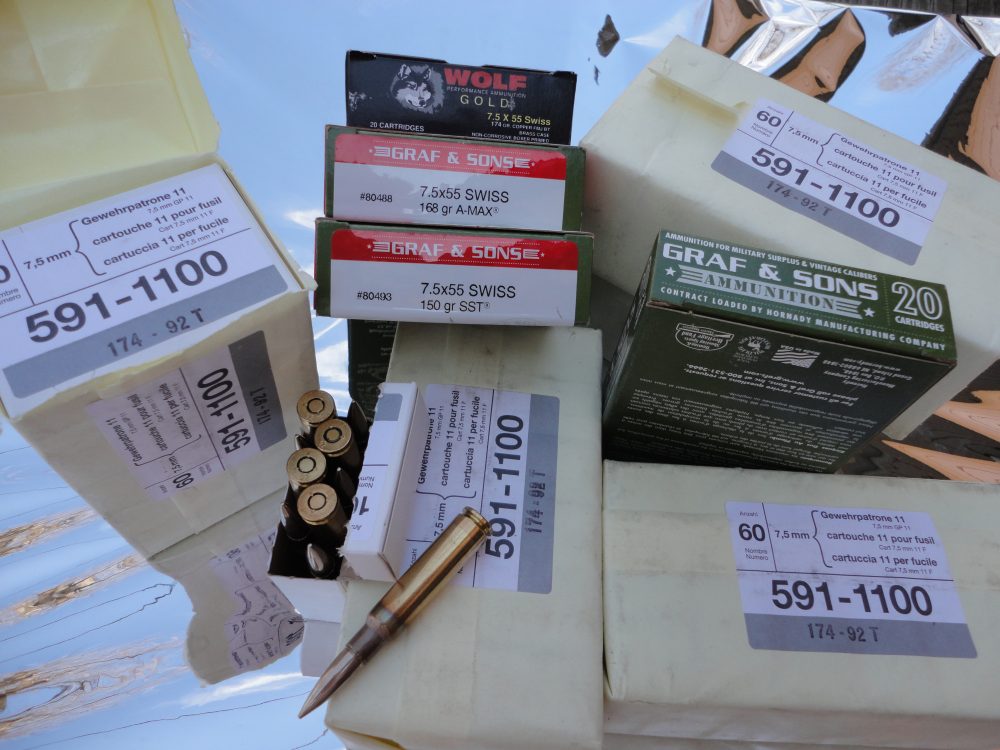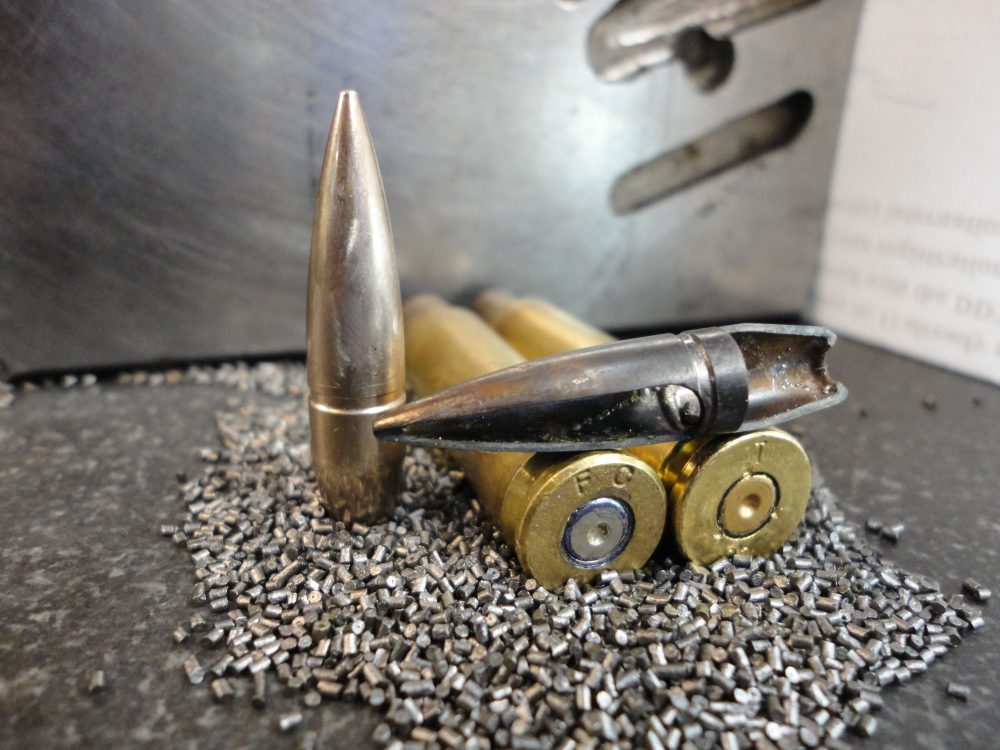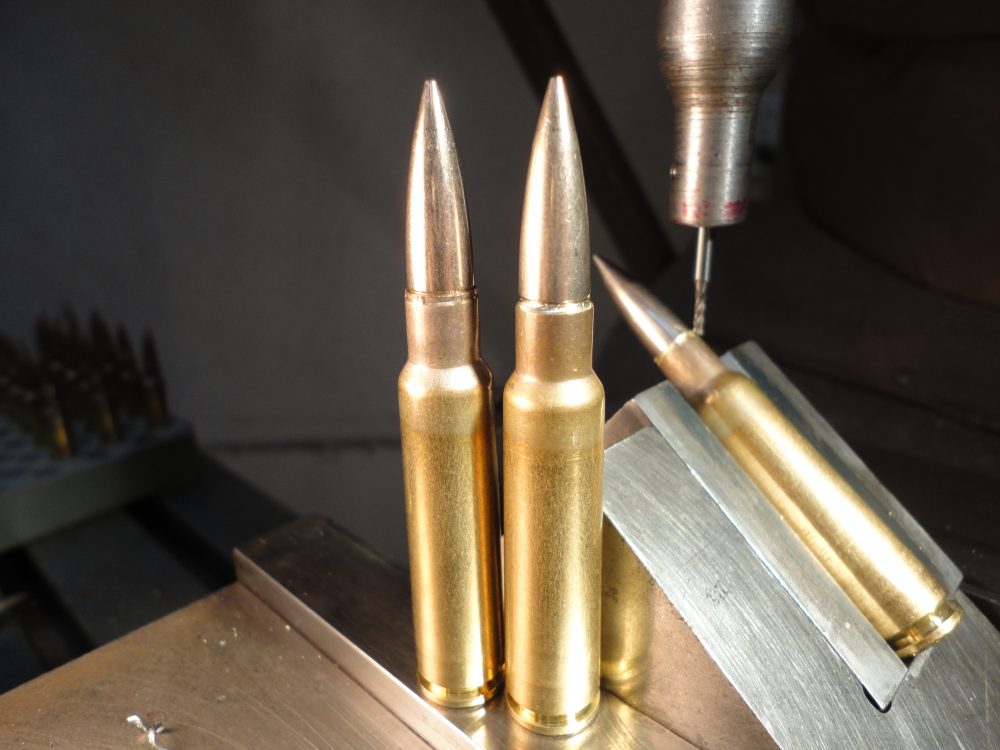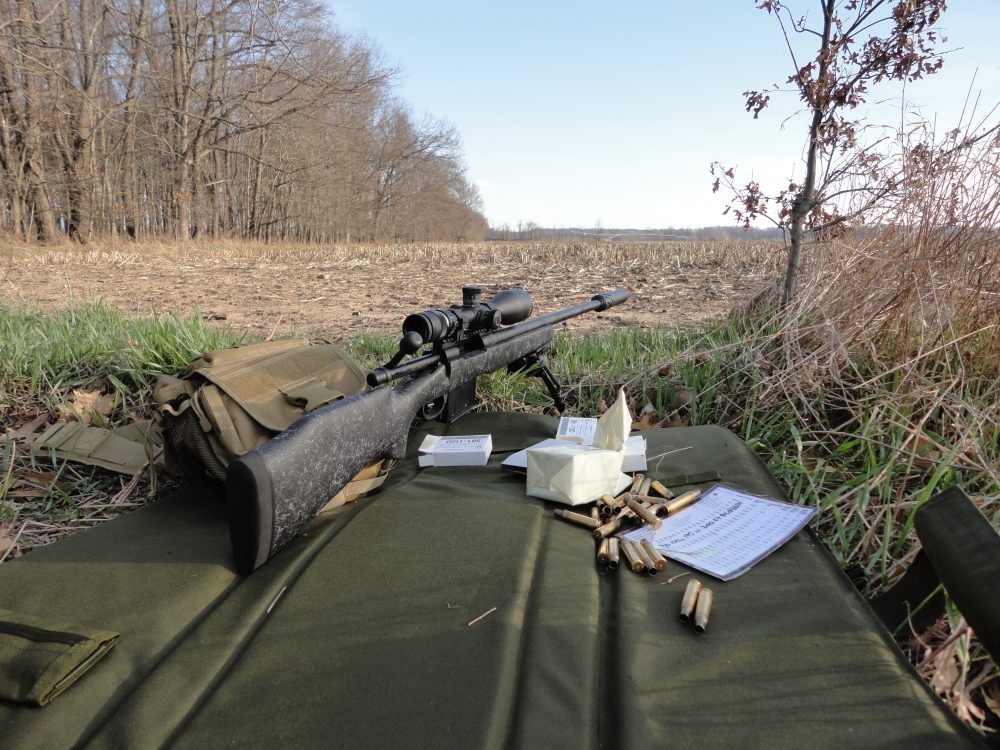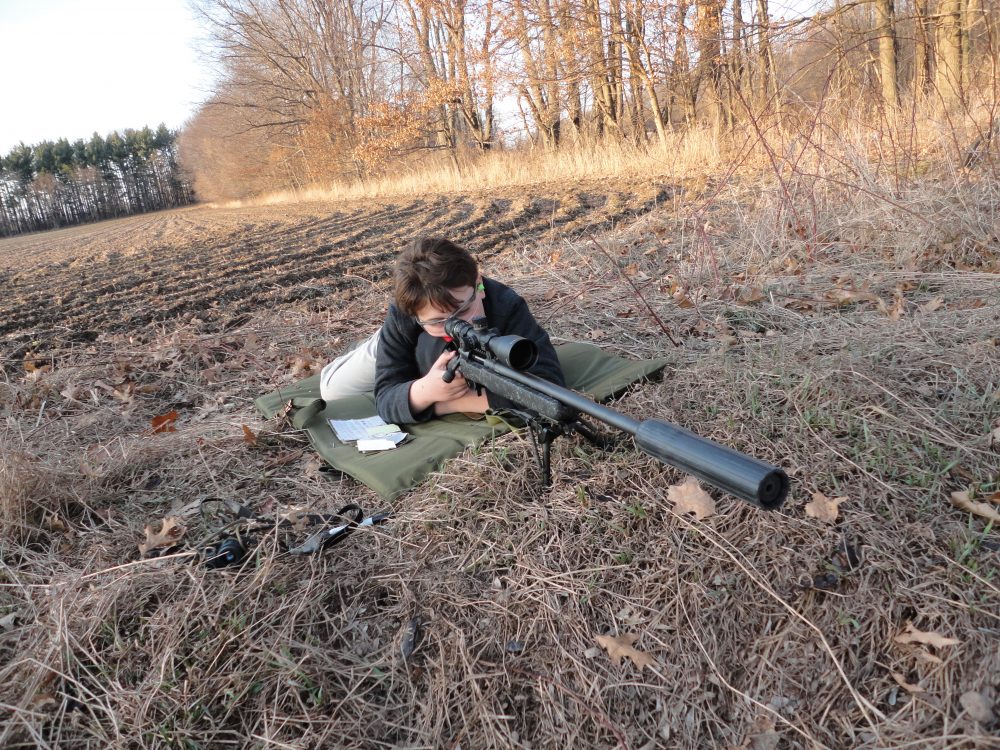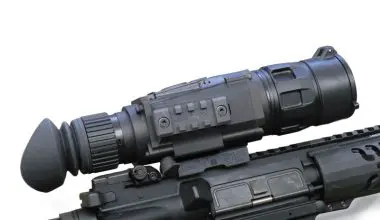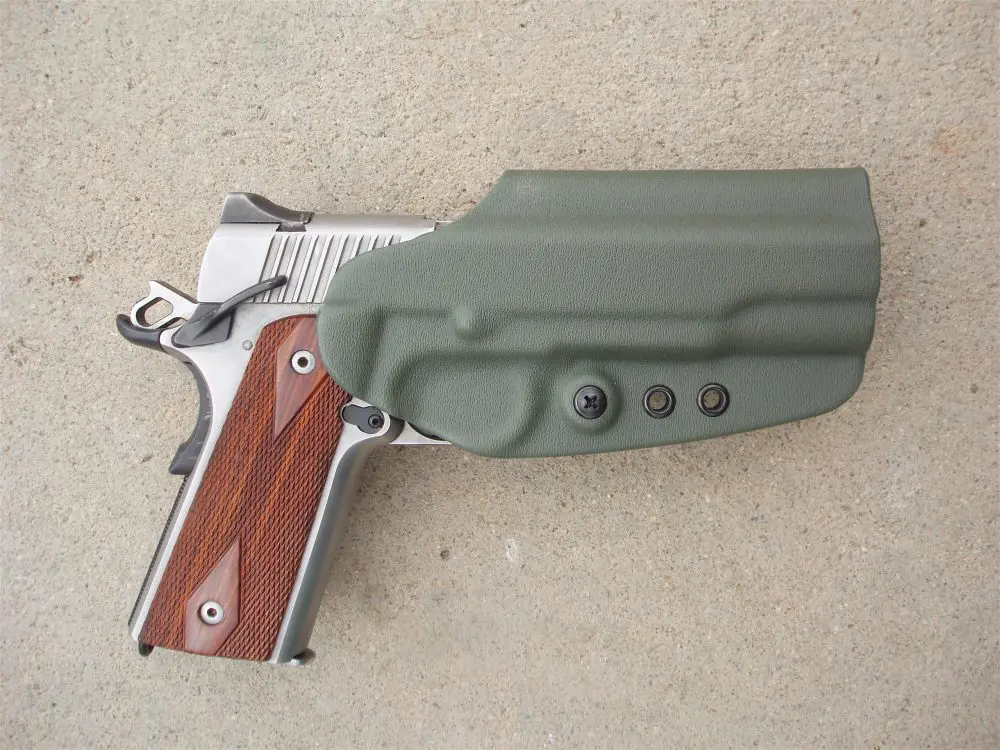Commercial loads are available from Wolf, Prvi Partizan and wholesaler Graf & Sons, contract-loaded for them by Hornady in PPU brass. Graf ammo was consistent 1- to 1¼-inch performer and not subject to the vexing fliers experienced with surplus GP11 ammo.
My Marine Colonel shooting pal is into vintage Swiss militaria and has several of the surplus Schmidt-Rubin rifles. They are reasonably priced and unique among contemporary military bolt guns in that they have a straight-pull action. The many I have examined had a tag under the steel buttplate bearing the name and unit of the last citizen to whom it was issued. Most of them have this.
One of the Colonel’s Swiss rifles has produced groups down to one inch with attractively priced Swiss surplus ammo. He says the others aren’t far behind.
Assuming the shooter is doing his part, this obviously takes a good rifle. But groups like that also require a level of consistency seldom found in military ammo. I set out to see if the surplus Swiss-made 7.5x55mm GP11 really has it. If these old military rifles, well-used and with barrels that are anything but free-floating, can squeeze out good groups, what might a properly tuned Remington be able to do?
Swiss GP11 (1992 manufacture in this case) ammo comprises a spire-point 174-grain FMJ boat tail with thickish plated steel jacket, Berdan primed case, and 51 grains of powder. Sectioned bullet has lead core melted out; 7.5 case (right) is .023 inch larger in diameter and 3/16 inch longer than .308 case (left), and approaches .30-06 case capacity.
But wait, why wouldn’t I just shoot my precision .308 bolt gun more? Because every five-shot group with primo factory ammo approaches a heart-rending $10.
Why don’t I use more affordable surplus .308 ammo? Because it’s no fun as it’s usually not accurate. And that makes it a waste of money, time, and barrel life.
I had a Remington 700 rifle economically optimized and rechambered to 7.5x55mm using the factory action, barrel, and stock. It shoots very well and every time I squeeze the trigger, a buck-and-change tinkles down from heaven. If this sounds interesting, read on.
The Colonel recently mentioned he had bought another 480-round case of 7.5×55 from AIM Surplus for 51 cents a round. His comment was timely, as I had just bought a case each of .308 Federal Gold Medal Match and ASYM Match, both using the 175-grain Sierra Match King. With shipping, I paid about $2 a pop.
The time was right to explore what this Swiss ammo might do in a well-built Remington.
Table of Contents
REMINGTON BUILD
When it comes to bolt actions, I am a relative dabbler. Uncertain where to go for getting a Remington 700 worked over, I randomly selected Short Action Customs (SAC) in Wellington, Ohio. I told owner Mark Gordon that since the theme was economy, I didn’t want a no-holds-barred $3,500 custom rifle. I wanted something that was “decent-plus” but not out of reach for the mid-level enthusiast or workin’ Joe.
Using a premium barrel and stock would be cheating, incongruous with the ammo cost, and just plain less interesting to most people. And this was, after all, an experiment—I was going out on a limb with rifle and ammo expenses, based on my friend’s remarks.
My experience with factory Remington heavy barrels has been that they can be coaxed into ¾-ish groups when everything else is right. Mark agreed, but said there would be no accuracy guarantee using a factory barrel. For SAC’s ½ MOA guarantee, a new, known-quantity premium barrel must be fitted.
Mirage band over barrel kept heat mirage out of scope view. Having 6,000 rounds encourages a lot of shooting—and learning.
Mark thought it an interesting experiment and quoted me $700 for the following on an existing heavy-barreled bolt gun:
- Basic action truing
- Set barrel back and re-chamber
- Re-crown and thread muzzle
- Supply surface ground recoil lug
- Tactical bolt knob conversion
- Trigger job

My project would include some additional steps and expenses in dealing with the unique cartridge. (SAC also does work on Long Actions, and is not limited to Remingtons.)
A note about “short-action” versus “long-action” for those not intimate with the Remington 700 line. There are two action lengths offered: the Short Action accommodates calibers of .308 Winchester length on down to .223 and shorter. Longer cartridges require the greater length and bolt stroke of the Long Action. Remington currently offers the LA in calibers such as .30-06, 7mm Magnum, and .300 Winchester Magnum. The 7.5×55, though only ¼-inch longer than a .308 Winchester, is too long for a short action.
I had no rifle to start with. A friend donated a fire-salvaged Remington 700 receiver, but when Mark checked it out, he declared it a no-go (It was free, I had to try!). Mark had a new receiver in stock, so we started with that. I sent him a 1:12-twist factory heavy .308 take-off barrel I had with 100 rounds through it, and Manson Precision Reamers sent him a 7.5×55 chamber reamer. I had sent a few rounds to Dave Manson, and between us we decided on some slight deviations from the military chamber that we felt should help with accuracy.
In keeping with the theme of “you can get this done to your existing rifle without buying all-new everything,” I wanted a factory Remington stock such as they provide on their flagship models. These are made for Remington by Bell & Carlson and feature a machined aluminum bedding block built into a foam-filled, laid-up composite stock. Darn good OEM stuff, especially considering it is not impossible to put a grand or more into a high-end tactical stock.
As I anticipated receiving it, I spoke to several people more in tune with bolt guns and learned that SAC is highly regarded in the precision bolt gun arena. A SEAL, a police sniper, and a competitive bolt gun shooter all gave SAC good reports.
Round on right has had the crimp removed in an unsuccessful attempt to remedy fliers.
THE CARTRIDGE
The 7.5 Swiss cartridge ballistically duplicates the .308, even though its case—at .023 inch larger in diameter and about 0.18 —has nearly the case capacity of the .30-06. GP11 ammo uses a .30-caliber, 174-grain boat-tailed FMJ bullet that runs about 2,650 feet-per-second (fps) out of my 25-inch barrel.
The jacket is steel with fine-looking cupro-nickel plating. The bullet diameter is actually about a half-thousandth inch smaller than our standard .308. I felt this would not be a problem and was relieved when Frank Green at Bartlein Barrels—makers of some of the best tubes these days—agreed.
AMMO ON THE CHEAP
I have bought a good deal of ammo from AIM Surplus. Usually, if anyone has it, they do, and at the best price or close to it. I’ve seen the 7.5 Swiss ammo elsewhere at the same price or higher, so for me it’s most convenient to default to AIM.
The 7.5 cartridge is still used by the Swiss in their MG51 machine gun and Sturmgewehr 57 (since supplanted by 5.56mm NATO rifles for front-line service). Bryan at AIM tells me that future availability of 7.5 appears solid, but I bought 6,000 rounds—enough to get a good chunk of the life out of a barrel—at, with shipping, about 55 cents per round. It represents a significant initial investment, but at my rate of consumption, I have about six years’ worth of shooting. And in the end, I have saved over $7000—yes, I said seven thousand dollars—in ammo costs compared to FGMM or ASYM.
But when I say “compared to,” it can’t just be about price. Could milsurp ammo, even Swiss-made, be accurate enough for use in augmenting one’s precision and long-range shooting skills?
I didn’t dare to hope it would match the high-end .308 loads I had bought at nearly four times the cost—and it didn’t—but it came close enough to make it useful for training and practice. And it was capable of putting five into just under an inch at 100 yards…sometimes.
Completed rifle ready for long-range practice.
IT WORKS—MOSTLY
Now at about 960 rounds fired, I have shot a good many groups of just under and just over 1 MOA (an inch at 100 yards). Which is not to say there haven’t been unexplained flyers opening groups to three inches. Of this I can only say—this GP11 is still the best surplus .30-caliber ammo I have ever experienced.
At 520 rounds, I rebarreled to a 1:10 twist, 20-inch unfired Remington factory barrel to more closely approximate the twist rate the Swiss use. Results were the same, telling me the ammo may not be all I had hoped.
Hornady loads the 7.5 for wholesaler Graf & Sons, using Hornady’s 168-grain A-Max and 150-grain SST bullets. The 168s removed any doubt about the rifle itself, going consistently under 1¼ inch at 100 yards from either barrel with no flyers. Wolf 174-grain FMJ loads did not fare quite so well, at about 2½ inches. All three of these loads are in brass reloadable cases by Prvi Partizan, whereas the GP11 brass is Berdan-primed and not easily reloadable.
The rifle, the first custom gun I have had done for myself, has impressed me. I’m not an old hand with custom bolt guns, but I know good work when I see it, hear it, and feel it. It is evident in little touches like the perfect barrel crown and thread protector, Sako-style extractor, and flawless Cerakote™ finish.
Simon (11) puts the whack on a steel plate 600 yards out.
THE PARTS AND THE PACKAGE
Economy was the theme, but I was not going to go to this much trouble and then risk the results on questionable mounts and optics. Trijicon helped with the loan of a 5-20X Accupoint scope, removing all doubt in the glass department. It is a solid scope that gives a perfect image. The fiber-optic-lit fine green dot centered in the mil-dot reticle was a big advantage.
As a 1911 guy, I go to Evolution Gun Works for several components critical to a primo custom pistol. EGW also manufactures AR-15 and bolt-gun products. I used their 20-minute rail and rings, finding them very well made, heavy duty but not heavy. In installation and use, they worked perfectly and cost under $100.
Having no trigger or bottom metal (trigger guard and magazine housing) caused a slight deviation from the econo theme. Mark installed a Timney trigger and bottom metal from Pacific Tool and Gauge, which uses a detachable magazine. I’ve never allowed myself to become dependent upon perfect triggers, but even my uneducated finger appreciates the Timney’s perfect break.
The stock’s comb must be low enough to remove the bolt for cleaning, which made it too low for a good cheek weld. The Pro-Tac adjustable cheek-piece I used was inexpensive, easy to install, and effective. But mostly it was necessary.
I snagged a Blackhawk Stalker drag bag for it all. This bag is the cat’s glutes for carry and use as a shooting mat.
I am fortunate to be shooting mates with a suppressor dealer and am able to aid in the testing of many brands and models. A good 90% of the rounds fired through my “Swiss Mischief” passed through a product of Innovative Arms, their LDSP model for .308, this one with their Exoskeleton upgrade, which ups its caliber range to .300 Winchester Magnum. IA has been on my radar for a few years now as a low-key provider of, well, innovative products. Their forte is well-thought-out, robust and uncomplicated products centered on sound reduction.
When you are present for and in the middle of 100,000 or so rounds per year of rifle fire, as I am (perhaps 20 times that of some guys who make their entire living at it), you begin to appreciate taking the edge off the sound. No matter how good your ear protection, reducing the sound level is the real start point for preventing hearing damage. Not going deaf and being considerate of others are the real reasons for suppressor use.
Checking and correcting runout in one handy setup with PRI Runout Rig.
CONCLUSIONS
Some accuracy has been sacrificed for economy. But in the process of firing one-sixth of my ammo supply into groups down to 7/8-inch at 100 yards, averaging maybe 1½ inches, but on occasion up to three inches, I have learned a great deal.
I find the ratio of accuracy to price acceptable for reaching toward the next level of rifleman-zen: things like doping the wind while bangin’ a 16-inch plate at 500 yards.
And when I need better, I can reach for the Graf A-Max load. Should I need best, one answer was found in Mexican Match. (See sidebar)
This rifle is pedestrian compared to what SAC’s niche really is: true high-end, precision bolt guns on the tactical side. That they didn’t turn their nose up at my project showed me they are customer-oriented, and I felt the pricing was reasonable. With my savings in ammo, I might have put another $1,000 into the rifle. But given what it can do as-is, and the volume of practice and training I have ahead with no financial inhibitions, I will gladly exchange half-inch groups and less shooting for one- to two-inch groups and more shooting.
Ned Christiansen is known for his custom 1911 pistols and unique AR-15 armorer tools. A lifelong student of all things related to firearms, he has many years of competition shooting under his belt. He is a police firearms instructor, inventor, and firearms consultant to agencies, industry, and individuals. His AR-15 and 1911 Armorer classes have been well received by clubs and agencies around the country.
MEXICAN MATCH
Mexican Match is an old term from early, informal silhouette shooting on the southern border, where great ammo wasn’t always available but good bullets were. I learned a long time ago that no matter how good the rifle, it can’t turn “normal” ammo into “awesome” ammo. In the case of the Swiss GP11, as good as it was, I wondered if a little extra effort might chase those fliers away.
The bullets in factory match ammo are not crimped, since any inconsistency may affect accuracy. For the same reason, high-end target shooters don’t crimp their handloads. Crimping is totally appropriate for military and duty ammo, and doesn’t necessarily cause accuracy to go all to hell, but when one is seeking the smallest possible groups, crimping is out. I went to a great deal of trouble to carefully machine out the crimps on 50 rounds. My efforts were not rewarded with any measurable decrease in group size.
Another aspect of precision that match handloaders dote on is bullet runout: is the bullet seated in such a way as to be in perfect alignment with the case’s axis, or is there some measurable “wobble”? If there is and the bullet enters the rifling slightly cocked, accuracy can suffer. Precision Reflex, Inc, sent me their Runout Rig—a tool that lets you measure and correct runout in the same setup.
I checked the runout of 100 rounds of GP11. The accuracy standard of anything more than .002 to .003 got culled. The worst I found with GP11 was .006, with about 60% of them being .004 or less. This 60% was separated into two groups, some with the crimp removed and some with it intact. Straightening to .001 runout was very easy. I now feel I could use this rifle in many kinds of competition; GP11 for staying sharp and MM for matches.
The whole idea of the project was to not have to load my own, but at this point, I simply had to know the limit of this rifle. To that end, my loading bench is currently being held down by a new set of Hornady dies with the in-line bullet seater, several boxes of Sierra Match Kings, and 100 pieces of Norma brass.
I have great expectations, and having 5,000 rounds left of paid-for (and pretty decent) training ammo feels good.
SOURCES
AIM SURPLUS
(888) 748-5252
www.aimsurplus.com
BELL & CARLSON
(620) 225-6688
www.bellandcarlson.com
EVOLUTION GUN WORKS
(215) 538-1012
www.egwguns.com
GRAF & SONS
(573) 581-2875
www.grafs.com
HORNADY MFG. CO.
(800) 338-3220
www.hornady.com
INNOVATIVE ARMS
(803) 408-9955
www.innovativearms.com
PRECISION REFLEX, INC.
(419) 629-2603
www.precisionreflex.com
SAVVY SNIPER
(740) 492-0100
www.savvysniper.com
SHORT ACTION CUSTOMS
(440) 309-0085
www.shortactioncustoms.com
TAC PRO, INC.
(905) 738-4711
www.tacpro.com
TRIJICON, INC.
(800) 338-0563
www.trijicon.com

